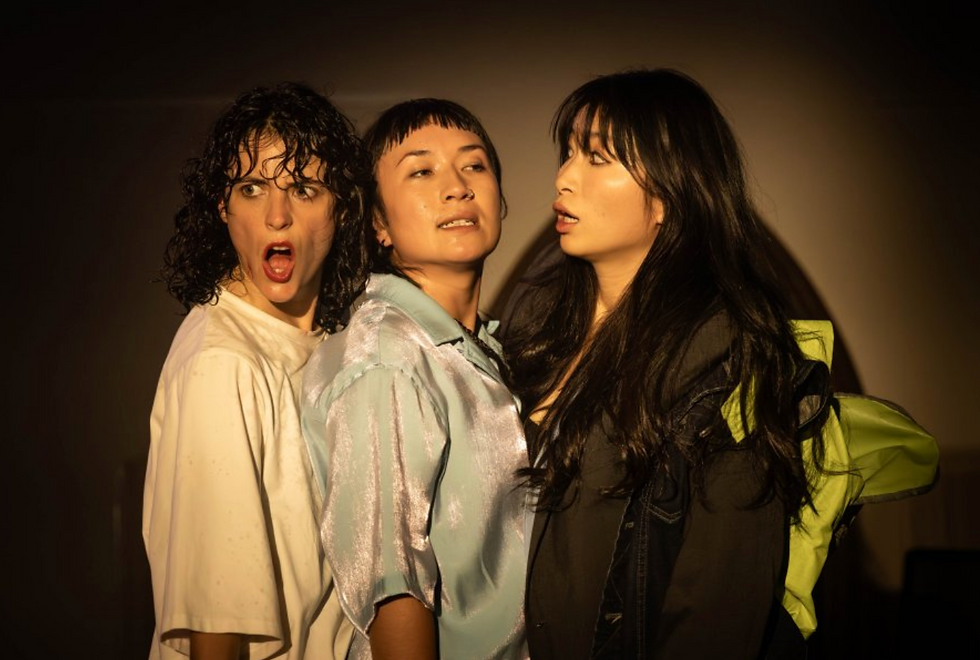Review: Bonegilla: The Migrant’s Journey - Melbourne Museum Theatre
- Theatre Travels

- Dec 9, 2023
- 3 min read
Review by Susanne Dahn
Simon Reich has produced a unique work blending oral history, archival footage, soundscapes, photos and other artefacts that, with live musical accompaniment, showcases a dozen or so European migrants to Australia via the Bonegilla Migrant Reception Centre near Wodonga in North Eastern Victoria.
The show features migrants (and their children) from many World War Two damaged parts of Europe including Germany, the Netherlands, Poland, Malta, Czechoslovakia, Serbia and Hungary.
Music was performed by piano and string quartet made up of Miranda Hill (Bass), Luke Severn (Cello), Jenny Thomas (Violin 1) and Kirri Buchler (Violin 2) with Simon Reich as composer, conductor and pianist.
The composition and playing was delightful, expertly supporting the tone of the narrative. On opening night there were a number of audio hitches which were later fixed - important as the audience is asked to focus on three separate works simultaneously.
The work takes the audience from war devastation - flight, bombing, capture - to passage by ship to Australia and then by train to the final destination of Bonegilla.
Digging to escape burial in rubble for twelve hours, the phosphorus bombs that just kept burning, the ‘go bag’ always at the ready all give a terrible glimpse of war-time suffering.
The joy of hundreds of children parading at war’s end with cans as musical instruments and mother’s jumper on a stick as a flag is touching.
There is little of the post-war suffering save the lack of education, jobs and sadness about leaving family , but so many of Australia’s European migrants simply had little choice. Lack of skills often removed North America as a destination choice.
The six week sea passage of the migrant fleet (comprised of converted war ships mixed with luxury liners) to Station Pier in Melbourne was joyous for many with plentiful food sometimes for the first time in their lives. The food did seem to make up for segregated accommodation and rough seas.
Trains awaited the migrants at the siding on Station Pier and the migrants began the 300 mile last leg of their journey to Bonegilla. The migrants had mostly never seen a land so vast and so empty. It was disappointing not to hear any of the accounts of the CWA afternoon teas offered at stops on this journey many of which are quite hilarious.
Arrival at the converted army camp was a big shock for many migrants occupying freezing or boiling tin huts with possums camped in the open roof beams, sleeping on farm gate bed bases covered by thin mattresses and being served far too much fatty mutton for dinner.
For others though it was a post-war haven of sunshine, fresh air and freedom with the most startling wonderful starry night skies. The creative and positive disposition of many improved the cooking, and they had great fun fishing and hunting and were able to go swimming in Lake Hume every day as long as they were careful about the underwater wires.
One migrant in this show suggests Bonegilla sits beside Uluṟu as the beating heart of the nation.
When Arthur Caldwell visited Bonegilla and heard the children’s choir sing Three Blind Mice and Its A Long Way To Tipperary he declared his government’s migration program a resounding success.
Congratulations to Simon Reich for his spotlight on Bonegilla and the role it has played in building our country. It would be so wonderful if he were to track the descendants of the Bonegilla migrants as I suspect many of today’s prominent Australians grew up hearing their parents emphasise that E in Bonegilla.

Image Supplied




